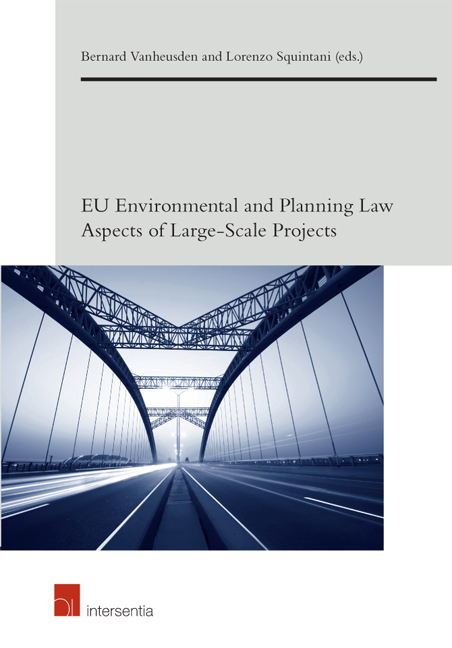Book contents
- Frontmatter
- Contents
- Introduction
- Part I General
- Part II Public Participation
- Part III Environmental Impact Assessment
- Part IV Water
- Part V Nature
- Part VI Land Use
- Chapter 15 Land Use Regulation in the UK and the Role of the Court
- Chapter 16 Public Participation in Land Management Law-Making Process in the Basque Country: Effects on Soil and Other Natural Resources
- Conclusion: Reconciling Conflicting Values: A Call For Research on Instruments to Achieve Quasi-Sustainability
Chapter 16 - Public Participation in Land Management Law-Making Process in the Basque Country: Effects on Soil and Other Natural Resources
from Part VI - Land Use
Published online by Cambridge University Press: 21 September 2018
- Frontmatter
- Contents
- Introduction
- Part I General
- Part II Public Participation
- Part III Environmental Impact Assessment
- Part IV Water
- Part V Nature
- Part VI Land Use
- Chapter 15 Land Use Regulation in the UK and the Role of the Court
- Chapter 16 Public Participation in Land Management Law-Making Process in the Basque Country: Effects on Soil and Other Natural Resources
- Conclusion: Reconciling Conflicting Values: A Call For Research on Instruments to Achieve Quasi-Sustainability
Summary
INTRODUCTION
Member States’ land management law must comply with European Union's policies and regulations. Land management law's principal objective is to set land uses according to both soil type and quality. Soil provides the main foundation for human activities and it is a matter of transversal nature. It affects issues of widely different kinds, e.g. water, habitats or birds protection. In fact, there is a link between land management and water legislation: land management plays a main role in the protection of aquifers. According to land management regulations, there are a number of land uses that cannot be set in areas of aquifers. It is understood that those land uses may have a negative effect on water quality.
The restrictions, prohibitions and requirements of the regulations have also the objective of protecting the areas ruled by the Habitats or Birds Directive.
The essential issue is that most land management regulations are approved by public authorities, not by Parliaments, and that they have a direct effect on local councils. This is a fundamental fact because councils can permit land uses that are in contradiction with the European Union's regulations. However, this unwanted practice can be prevented by an appropriate land management law, which must be implemented by councils.
Land management in the Basque Country is regulated by the Land Management Law. The Land Management Law is divided into three different categories. The most general regulations are the Guidelines for Land Management, which govern spatial planning in the whole Autonomous Community of The Basque Country. These Guidelines have a legal nature and they are hierarchically superior to Urban Planning Regulations. The Guidelines for Land Management classify land into different types and, according to this classification, these rules determine all the different possible uses of each type of land. Thus, every part of the territory of the Autonomous Community is classified as a specific land category as well as connected to some specific uses. The Land Management Guidelines establish which land uses are forbidden, which are admissible and which are adequate. In accordance with what is established in the Land Management Act, the Guidelines for the Land Management's purpose is to oversee and establish land uses in the Autonomous Community.
- Type
- Chapter
- Information
- Publisher: IntersentiaPrint publication year: 2016



